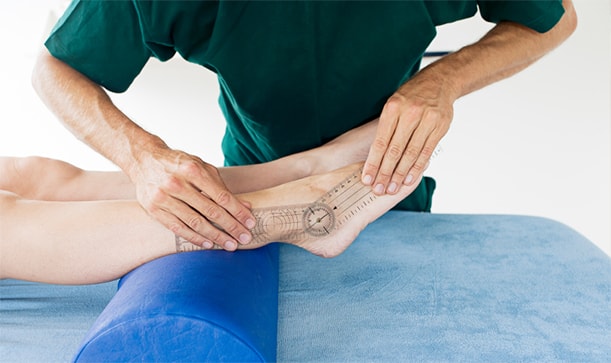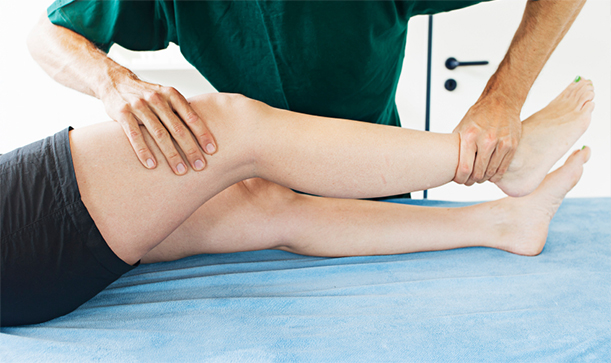CK Physiotherapy
AREAS COVERED
W7, W5, W13, Ealing, West London
57 Elthorne Avenue
Hanwell, W7 2JY
T: 020 8566 4113
M: 079 572 46185
E: info@ckphysio.co.uk
Location / Parking
We are situated in Hanwell, between Boston Manor Road and Northfields Avenue, south of the Uxbridge Road.57 Elthorne Avenue
Hanwell, W7 2JY
There are parking restrictions Mon - Fri 9-10am and 2-3pm. If you need a permit during this time please inform your therapist when you arrive. There are no parking restrictions at other times.
Opening Times
Please phone the number above during working hours to make an appointment. Our reception service will be happy to book your session.
London Underground / Bus Services
London Underground
10 min. walk from Boston Manor Tube Station.
15 min. walk from Northfields Tube Station.
Bus Service
E8, E3, E2, 207, 607, 83
Request Call Back
Our Blog
How Physiotherapists Can Help You Recover from Impingement Syndrome
By: BryanKelly (Psst, View author in Google Plus) Date: Jun 16th, 2020Impingement syndrome can cause extreme pain and discomfort in your shoulder. This condition occurs when a person's rotator cuff rubs against the area on the top of their shoulder called the acromion.
Shoulder impingement is common for people who play sports that involve a lot of throwing or aggressive arm movement, like in baseball and tennis. It is also sometimes referred to as "swimmer's shoulder" due to the high number of swimmers that often get it.
Shoulder impingement can cause severe pain and can even make you take a break from playing your favourite sports. However, there are luckily a few things that you and your physiotherapist can try to help your shoulder feeling as good as new in a relatively short amount of time.

How Can I Tell if I Have Impingement Syndrome?
Not all shoulder pain is caused by impingement syndrome. A pulled muscle, for example, can cause the area around your shoulder to be in pain, especially when you try to move it.
However, pain from an impingement shoulder is caused by the muscle, tissue, or tendons to be pinched when you raise your arm, which causes the pain to be much sharper than a pulled muscle. Some of the symptoms could include:
Increased pain
This occurs during strenuous activities, especially when it involves throwing, pulling, or lifting your arms above your head.
Pain when pressure is applied
Sometimes, the pain will wake people up from their sleep if they accidentally roll over and lay on the injured shoulder.
Weakness in the shoulder
Many people complain of feeling extreme weakness in their shoulder even when they are not using it.
Constant pain
An individual may feel the pain that usually starts in the shoulder and travels down the side of the arm.
Swelling and pain in the shoulder
Sometimes, people may notice slight inflammation around their shoulder that may be tender or painful when touched.
Other symptoms
Someone with impingement syndrome may not have every one of the symptoms listed above. Some people may only experience one of the symptoms, while others may have multiple or all of the symptoms listed.
Self-Help Exercises to Do if You have Impingement Syndrome
If you are still unsure whether or not you have impingement syndrome, the following are some exercises that you can try.
1. Take your hand that is on the same side of the injured shoulder and place it on your opposite shoulder.
2. For example, if your right shoulder hurts, bend your right arm at the elbow and place your right hand on your left shoulder.
3. Then, take your bent arm and raise it so that your arm is parallel with the ground. This will allow your rotator cuff to move.
4. If you notice any pain, it could mean that your shoulder has impinged.
Exercises to Avoid with Impingement Syndrome
You will want to rest your shoulder as much as possible and make sure not to overwork it if you have impingement syndrome. However, there are some light exercises and stretches that you can do to help strengthen your rotator cuff.
If you feel that you have impingement syndrome, you may need to avoid the following strenuous exercises.
Weight lifting
You should avoid any exercise that involves lifting a weight up to chest or above your head. In fact, grabbing a weight with both hands and lifting it up to your chest puts your shoulder in an impinged position, which can help to create or agitate your shoulder impingement.
Pectoral-Building Exercises
Another thing to avoid while recovering from shoulder impingement is any pectoral-building exercises. When your pectoral muscles are being overworked, your shoulder will naturally rotate forward, which could slow down the recovery time of your impingement.
Instead of building up your pectoral muscles, it is recommended that you stretch the muscles. You can do this by placing your hands on the side of a doorway or a pillar. Then, keeping your arms still, gradually turn your body away from your arms until you start to feel the muscles in your chest tighten slightly. Hold the position for about 10 to 15 seconds and repeat five times. Try to stretch this stretching exercise at least three times a day.
Recovering from Shoulder Impingement
In addition to the chest stretches that you should do three to five times a day, there are a few other stretches that are important during the rehabilitation process.
Shoulder blade stretch
Another stretch that you should be performing three to five times a day is the shoulder blade stretch. For this stretch, you will need to stand up straight and try to squeeze your shoulder blades together. Try to imagine that you are trying to pinch a small ball in between your shoulder blades, then hold that position for five seconds and repeat the movements 10 more times.
Arm and shoulder stretches
It is also a good idea to stretch the arm and shoulder muscles as well. One way to do this is by standing with your hand gently resting on the table. Then, slowly walk away from your arm while still keeping your hand firmly in place. Stop moving away once you start to feel the tension and hold that position for three seconds. Repeat this exercise five times.
Using tension bands
Another exercise to try involves using tension bands commonly used for therapy. In this exercise, you will wrap a therapy band around a doorknob and hold the other end with both hands. Then, pinch your shoulder blades together and start to pull the band straight towards your body, then move your hands down slightly and back towards the door. This motion should look as if you are rowing a boat. You should continue this motion at least 15 times.
Seek a Physiotherapist Advice
Impingement syndrome can disrupt your day-to-day activities. Even simple tasks, such as reaching in a cupboard or putting on a jacket, can cause great discomfort. People who suffer from shoulder impingement can greatly benefit from physiotherapy treatment. The severity of an impingement injury can vary greatly from person to person.
When you visit a physiotherapy centre, your physiotherapist will ask you questions and evaluate your injury to determine the severity level. Then they will be able to come up with an exercise plan that is tailored to your specific needs to help you have a speedy recovery.
CK Physiotherapy Updates on COVID-19
In times of the COVID-19 pandemic, our clinic continues to assess, correct and progress exercises, give advice and show you alternative techniques you can use at home to self-massage and manipulate. This is offered via Skype, FaceTime and Zoom consultations at £35 for self-paying patients. CK Physiotherapy has the approval from the BUPA, AVIVA, and AXA to conduct remote consultations. If you have any questions about how our physiotherapists can help with your injury, feel free to contact us today.





